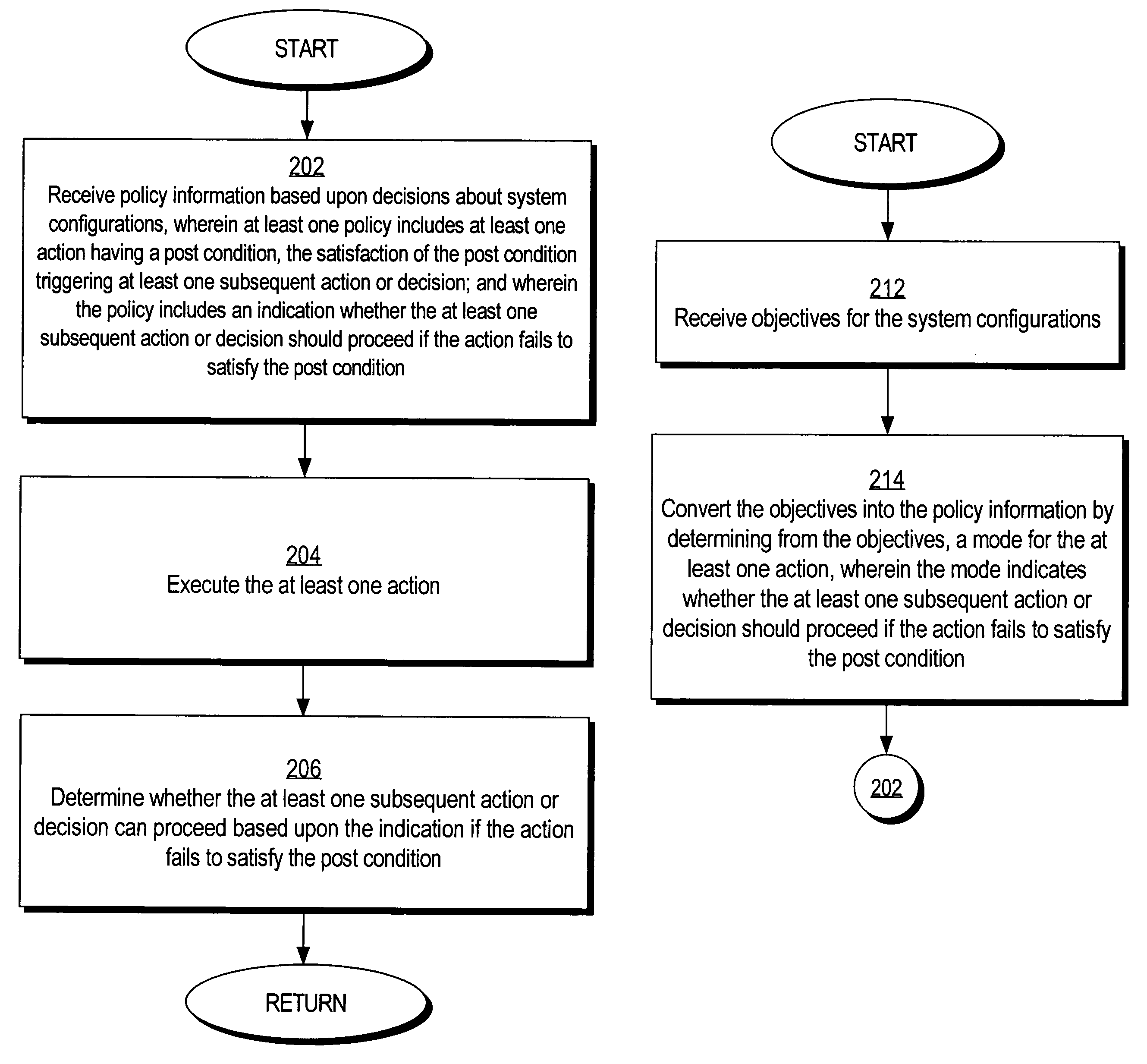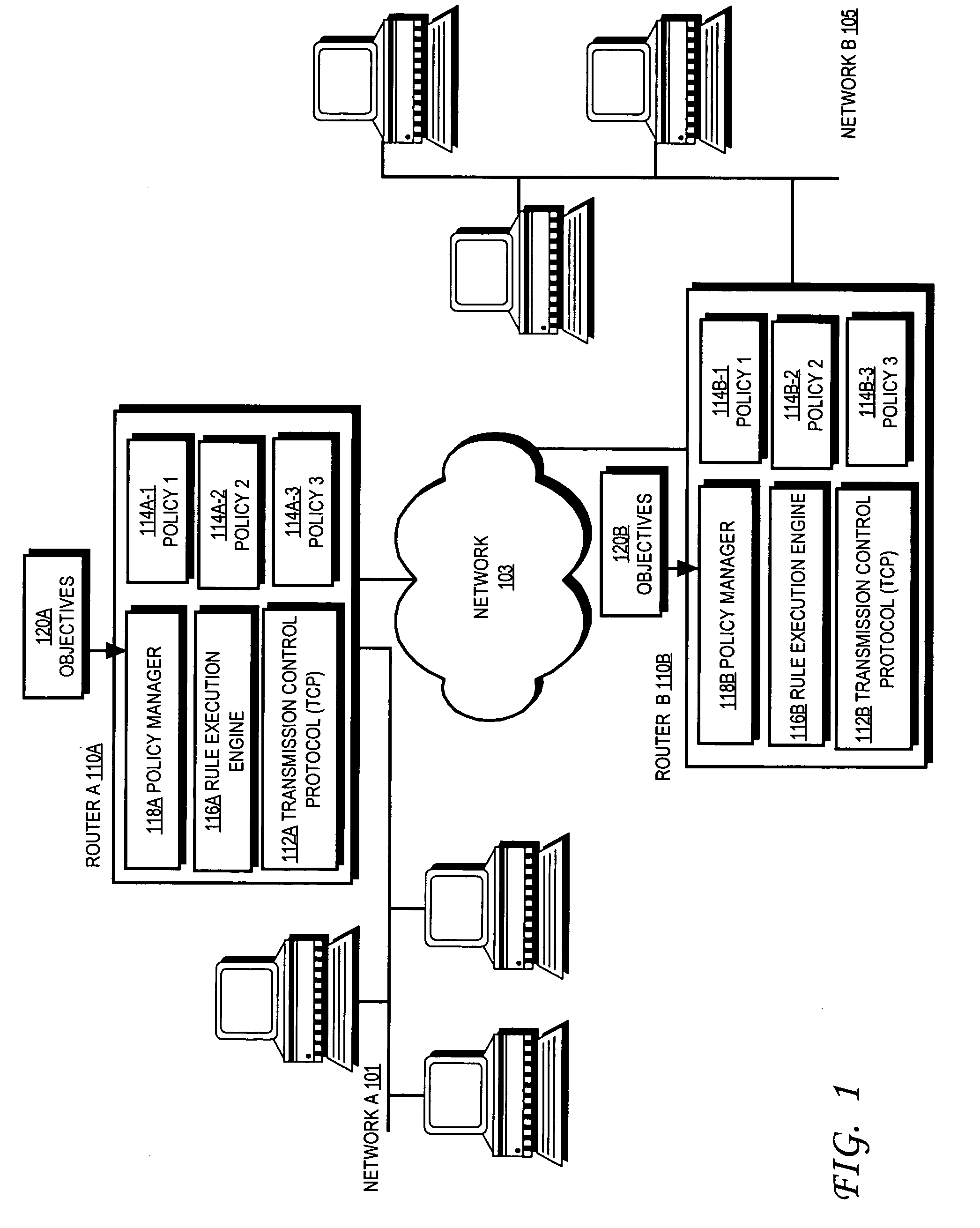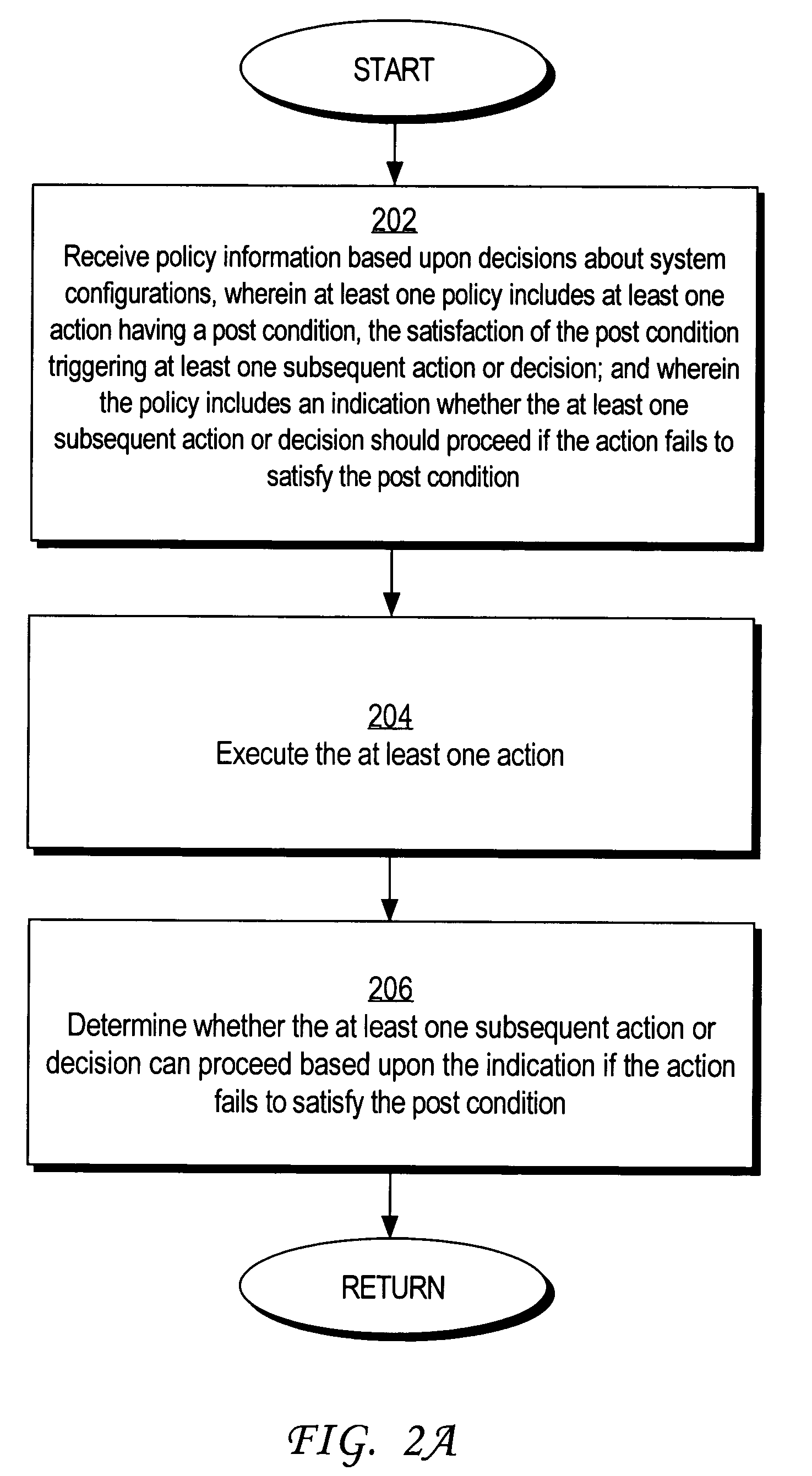Preventing deadlock in a policy-based computer system
a computer system and policy-based technology, applied in the field of policy-based computer systems, can solve the problems of not allowing the creation and implementation the disadvantages of conventional policy-based approaches, and the inability to prevent the creation of policy statements or expressions
- Summary
- Abstract
- Description
- Claims
- Application Information
AI Technical Summary
Benefits of technology
Problems solved by technology
Method used
Image
Examples
Embodiment Construction
[0016]A method and apparatus for preventing deadlock in a policy-based computer system is described. In the following description, for the purposes of explanation, numerous specific details are set forth in order to provide a thorough understanding of the present invention. It will be apparent, however, to one skilled in the art that the present invention may be practiced without these specific details. In other instances, well-known structures and devices are shown in block diagram form in order to avoid unnecessarily obscuring the present invention.
[0017]Embodiments are described herein according to the following outline:[0018]1.0 General Overview[0019]2.0 Structural and Functional Overview[0020]3.0 Method of Preventing Deadlock In Policy-Design Constraints[0021]3.1 Defining An Action Model That Captures The Execution Semantic[0022]3.2 Defining An Action Mode Construct[0023]3.3 Example implementations[0024]4.0 Implementation Mechanisms—Hardware Overview[0025]5.0 Extensions and Alt...
PUM
 Login to View More
Login to View More Abstract
Description
Claims
Application Information
 Login to View More
Login to View More - R&D
- Intellectual Property
- Life Sciences
- Materials
- Tech Scout
- Unparalleled Data Quality
- Higher Quality Content
- 60% Fewer Hallucinations
Browse by: Latest US Patents, China's latest patents, Technical Efficacy Thesaurus, Application Domain, Technology Topic, Popular Technical Reports.
© 2025 PatSnap. All rights reserved.Legal|Privacy policy|Modern Slavery Act Transparency Statement|Sitemap|About US| Contact US: help@patsnap.com



